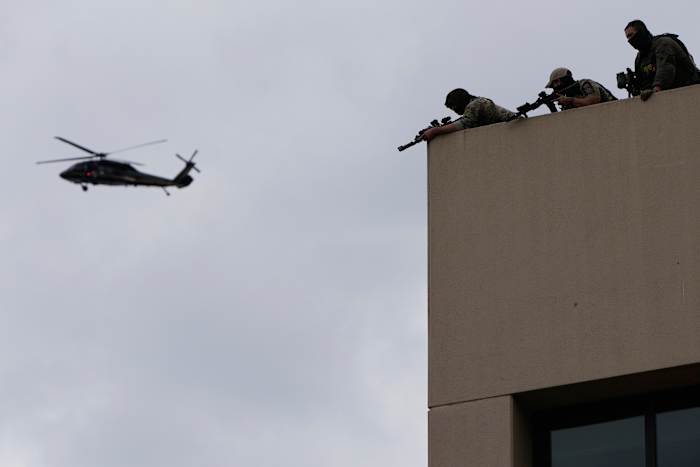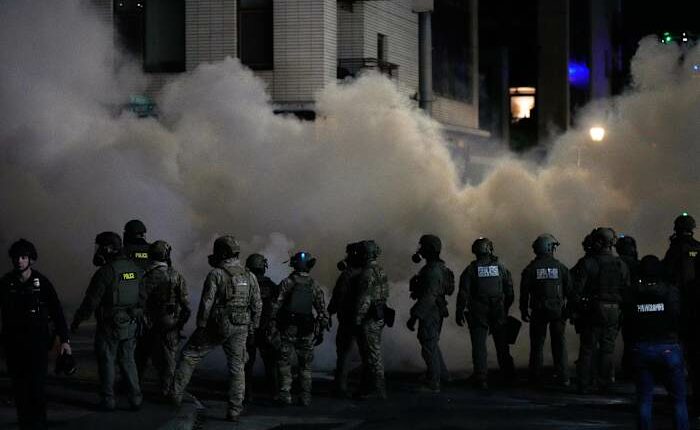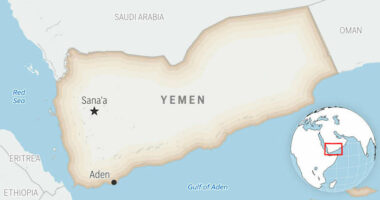Share this @internewscast.com

PORTLAND, Ore. – President Donald Trump’s administration was temporarily restrained by a federal judge in Oregon from sending the National Guard into Portland. This decision came on Saturday as a result of a lawsuit filed by both the state and the city.
U.S. District Judge Karin Immergut placed the ruling on hold pending further legal discussions. According to Immergut, the calm protests witnessed in the city did not warrant the federal government’s intervention, asserting it could infringe upon Oregon’s state authority.
“This nation deeply values its tradition of resisting excessive governmental power, particularly when it involves military interference in civil matters,” Immergut stated. She added, “At the core, this tradition highlights a fundamental truth: ours is a nation governed by Constitutional law, not under martial law.”
The Trump administration late Saturday filed a notice of appeal to the 9th U.S. Circuit Court of Appeals.
The lawsuit from state and city officials was filed to challenge the deployment shortly after the Trump administration declared its intention to federalize 200 Oregon National Guard troops for protecting federal properties, asserting that the city was as if “torn by war.”
However, Oregon leaders dismissed this portrayal as absurd. In recent weeks, the U.S. Immigration and Customs Enforcement office has seen nightly demonstrations, involving only a few dozen protestors prior to the announcement of troop deployments.
Judge: The federal response didn’t match the facts
While the president typically holds significant latitude to deploy National Guard forces when standard law enforcement is insufficient, Judge Immergut argued that such circumstances did not exist in Portland.
Plaintiffs were able to show that the demonstrations at the immigration building were not significantly violent or disruptive ahead of the president’s order, the judge wrote, and “overall, the protests were small and uneventful.”
“The President’s determination was simply untethered to the facts,” Immergut wrote.
White House says it will appeal
Following the ruling, White House spokesperson Abigail Jackson said that “President Trump exercised his lawful authority to protect federal assets and personnel in Portland following violent riots and attacks on law enforcement — we expect to be vindicated by a higher court.”
Oregon Attorney General Dan Rayfield called the ruling “a healthy check on the president.”
“It reaffirms what we already knew: Portland is not the president’s war-torn fantasy. Our city is not ravaged, and there is no rebellion,” Rayfield said in a statement. He added: “Members of the Oregon National Guard are not a tool for him to use in his political theater.”
Trump has deployed or threatened to deploy troops in several U.S. cities, particularly ones led by Democrats, including Los Angeles, Washington, Chicago and Memphis. Speaking Tuesday to U.S. military leaders in Virginia, he proposed using cities as training grounds for the armed forces.
Last month a federal judge ruled that the president’s deployment of some 4,700 National Guard soldiers and Marines in Los Angeles this year was illegal, but he allowed the 300 who remain in the city to stay as long as they do not enforce civilian laws. The Trump administration appealed, and an appellate panel has put the lower court’s block on hold while it moves forward.
Portland protests were small, but grew after deployment was announced
The Portland protests have been limited to a one-block area in a city that covers about 145 square miles (375 square km) and has about 636,000 residents.
They grew somewhat following the Sept. 28 announcement of the guard deployment. The Portland Police Bureau, which has said it does not participate in immigration enforcement and only intervenes in the protests if there is vandalism or criminal activity, arrested two people on assault charges. A peaceful march earlier that day drew thousands to downtown and saw no arrests, police said.
On Saturday, before the ruling was released, roughly 400 people marched to the ICE facility. The crowd included people of all ages and races, families with children and older people using walkers. Federal agents responded with chemical crowd control munitions, including tear gas canisters and less-lethal guns that sprayed pepper balls. At least six people were arrested as the protesters reached the ICE facility.
Later in the evening, federal agents again emerged from the facility and deployed tear gas on a crowd of about 100 people.
Trump sent federal officers to Portland over the objections of local and state leaders in 2020 during long-running racial justice protests following George Floyd’s killing by Minneapolis police. The administration sent hundreds of agents for the stated purpose of protecting the federal courthouse and other federal property from vandalism.
That deployment antagonized demonstrators and prompted nightly clashes. Federal officers fired rubber bulled and used tear gas.
Viral videos captured federal officers arresting people and hustling them into unmarked vehicles. A report by the Department of Homeland Security’s inspector general found that while the federal government had legal authority to deploy the officers, many of them lacked the training and equipment necessary for the mission.
The government agreed this year to settle an excessive force lawsuit brought by the American Civil Liberties Union by paying compensating several plaintiffs for their injuries.
___
Boone reported from Boise, Idaho. Associated Press writer Josh Boak in Washington contributed.
Copyright 2025 The Associated Press. All rights reserved. This material may not be published, broadcast, rewritten or redistributed without permission.











